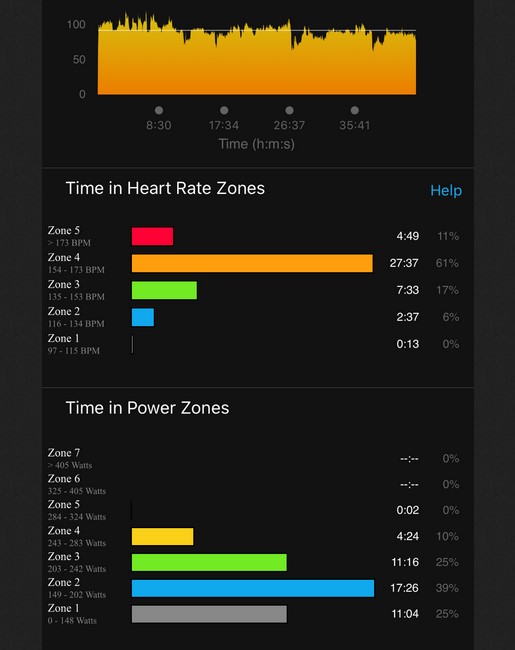The Power Zone quantifies the rider’s rate of work on the bike. It is a great tool to track your fitness over time and you can see your improvement.

So What is Power Zone Training? According to Onepeloton,
“Power Zones are a method of fitness training designed to have you working at seven different levels (or zones) of exertion. In these classes, the instructor typically calls out a cadence range, but instead of giving a resistance range, they specify the zone you should be working in.”
How Do You Find Power Zone Graph After a Ride?
But the fact is.. Many riders can’t see or find a power zone graph on peloton and truly, Peloton does not display Power Zone charts, it only shows heart rate zone chart. But there are many ways to see power zone chart.
In general, Peloton does not display Power Zone charts. To see the power zone graph after riding you need to enable power zone in setting and use apps like mPaceLine (on iphone), mPaceLine plus (for android) or connect Garmin or export data to Strava.


There are 7 power zones. To track your progressive fitness goal; its really important.
How do I see my peloton power zones setting?
To be precise, Tap your username in the bottom left corner of the Peloton Bike. Then, immediately above your Profile Picture, tap the gray gear next to “Find Members.” Then, select “Preferences.” When you scroll down, you’ll see the Power Zones setting.
How are Peloton power zones calculated?
According to Onepeloton, “First, subtract 5% from your FTP Test average output number. This result will be an accurate estimate of the average output you could hold for 60-minutes (i.e. your FTP). For example, if your average output is 115, find 5% (115 X 0.05 = 5.75), then subtract it from the total number (115 — 5.75 = 109.25)”
Is Power Zone training good for weight loss?
In general, Power zone endurance rides are good for weight loss because it allow you to keep your heart rate between the aerobic and anaerobic levels. And obviously, an increased heart rate boosts oxygen demand, allowing you to burn more fat over time.